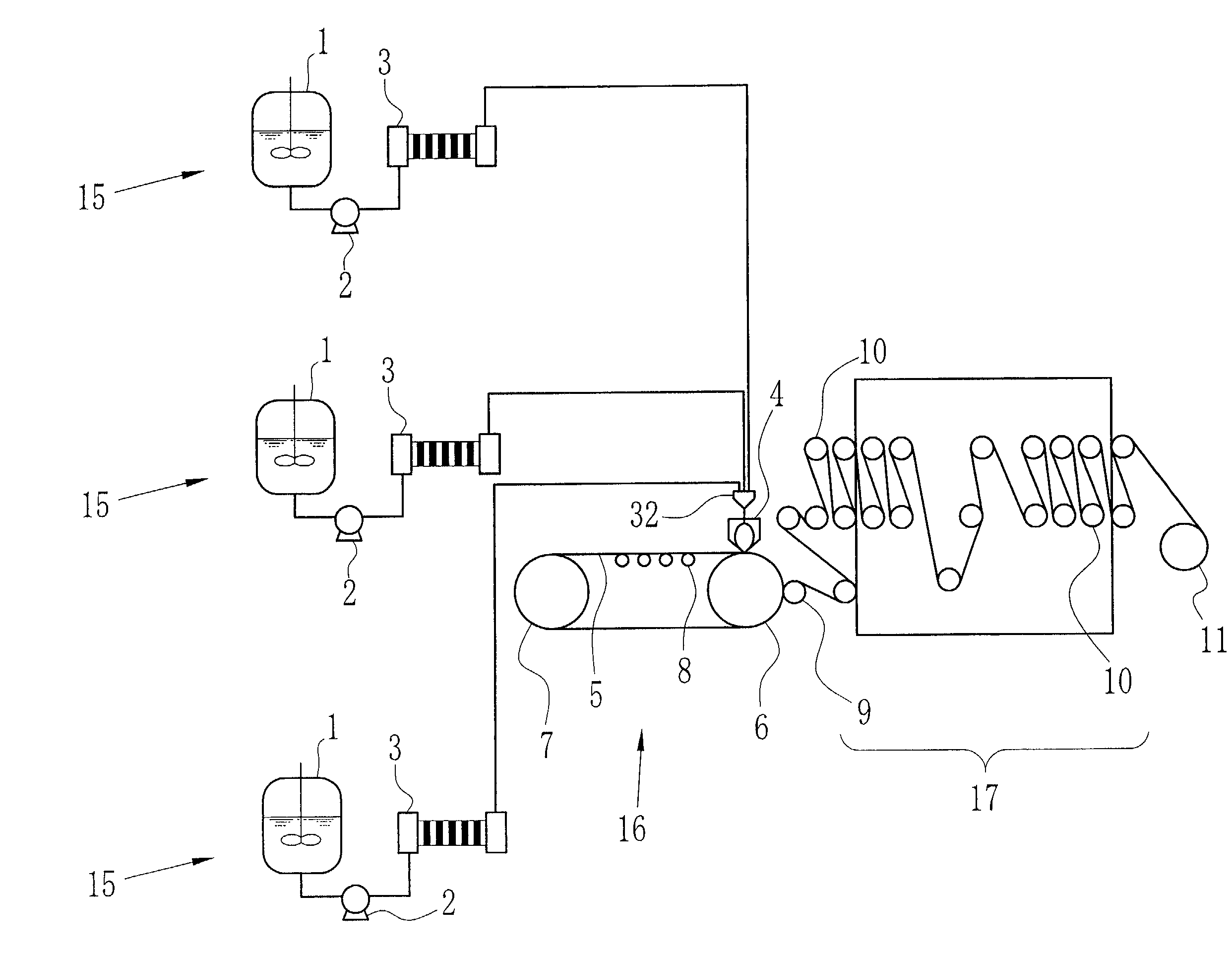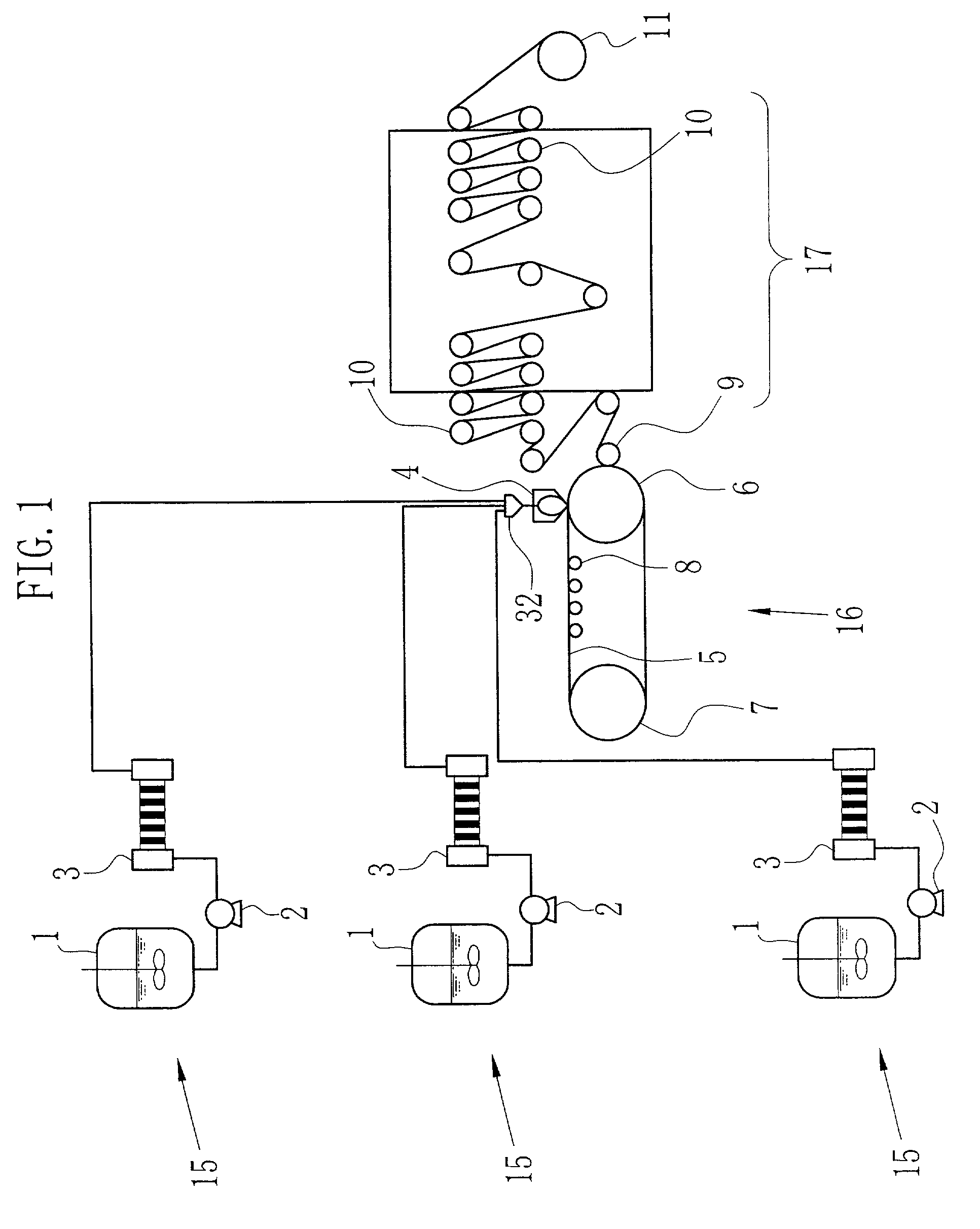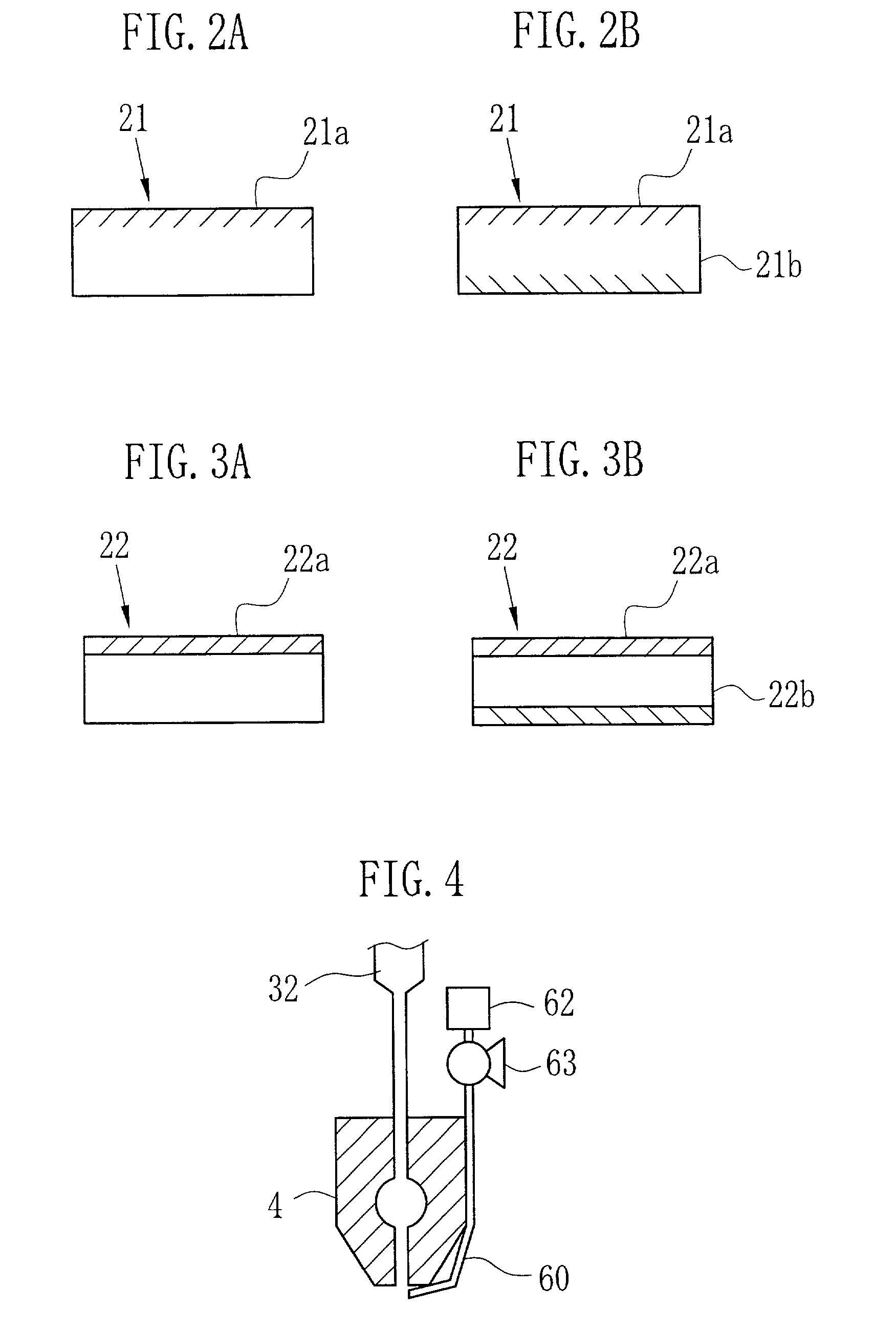Method of producing of cellulose ester film
a technology of cellulose ester and cellulose ester film, which is applied in the direction of coating, layered products, other domestic articles, etc., can solve the problems of uneven thickness hardly regulated amount of mixture and solvent, and uneven thickness in both edges of dope solution on the supporter
- Summary
- Abstract
- Description
- Claims
- Application Information
AI Technical Summary
Benefits of technology
Problems solved by technology
Method used
Image
Examples
experiment 1
Preparation of Solution Composing Dope Solution
[0132] In Experiment 1 a solution S1 is used for the intermittent layer and made from following compounds in the above-described method for preparing the dope solution.
1 cellulose triacetate 100 part by weight triphenylphosphate 7.8 part by weight biphenyldiphenylphosphate 3.9 part by weight (plasticiser) methylenchloride (first solvent) 300 part by weight methanol (second solvent) 65 part by weight ultraviolet absorptive agent 1.0 part by weight
[0133] Note that the cellulose triacetate used in Experiment 1 has 60.9% of acetification degree. The solid content density of the solution S1 is 23.4 wt. %, and the additives are mixed in ratio of 13 wt. % to the cellulose triacetate.
[0134] In Experiment 1 a solution S2 is used for the surface layer, and made from the following compounds.
2 cellulose triacetate 87 part by weight triphenylphosphate 6.8 part by weight biphenyldiphenylphosphate 3.4 part by weight (plasticiser) methylenchloride (fir...
embodiment 1
[0139] In Embodiment 1 (E1 ), the solution S2 is used for the surface layers. In producing the film, the die 4 of the feed block type is used. The film is formed such that the averaged thickness of the film after drying the dope solution may be 60 .mu.m, (S1+S2)D.times.100 may be 5%, and ratio (A / B) may be 0.72 when A and B are the shearing viscosity of the solution for the surface layer and that of the solution for the intermittent layer respectively.
embodiment 2
[0140] In Embodiment 2 (E2), the film is produced in the same condition as in Embodiment 1, except that (S1+S2)D.times.100 is 30%.
PUM
| Property | Measurement | Unit |
|---|---|---|
| Fraction | aaaaa | aaaaa |
| Fraction | aaaaa | aaaaa |
| Fraction | aaaaa | aaaaa |
Abstract
Description
Claims
Application Information
 Login to View More
Login to View More - R&D
- Intellectual Property
- Life Sciences
- Materials
- Tech Scout
- Unparalleled Data Quality
- Higher Quality Content
- 60% Fewer Hallucinations
Browse by: Latest US Patents, China's latest patents, Technical Efficacy Thesaurus, Application Domain, Technology Topic, Popular Technical Reports.
© 2025 PatSnap. All rights reserved.Legal|Privacy policy|Modern Slavery Act Transparency Statement|Sitemap|About US| Contact US: help@patsnap.com



